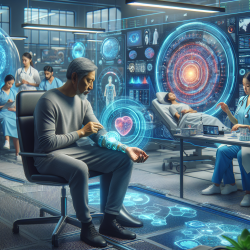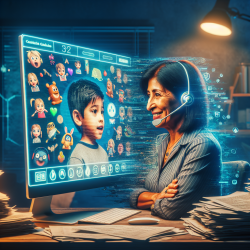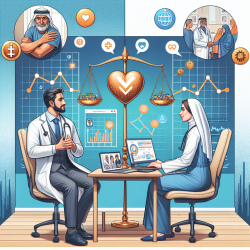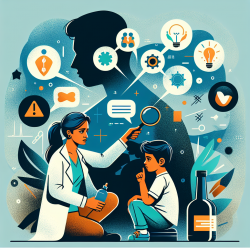Introduction
The integration of non-invasive biosensing with artificial intelligence (AI) is transforming the landscape of healthcare. The research article "Non-Invasive Biosensing for Healthcare Using Artificial Intelligence: A Semi-Systematic Review" explores how combining biosensing technologies with deep learning can enhance remote diagnosis, monitoring, and therapy. This blog post will delve into the key findings of the research and offer insights for practitioners looking to leverage these advancements in their practice.
Understanding Non-Invasive Biosensing
Non-invasive biosensors, such as those found in wearable devices, can collect vast amounts of physiological data. Examples include Electrodermal Activity (EDA), Electrocardiography (ECG), and Electroencephalography (EEG). When paired with deep learning, these sensors can provide real-time insights into a patient's health, enabling personalized and adaptive healthcare solutions.
Key Findings from the Research
The research highlights several deep learning architectures that are pivotal in processing biosensor data:
- Convolutional Neural Networks (CNNs): Effective for analyzing grid-like data, such as images and time-series data, making them suitable for biosignal analysis.
- Long Short-Term Memory Networks (LSTMs): Ideal for sequential data processing, such as continuous monitoring of physiological signals.
- Autoencoders: Useful for dimensionality reduction and anomaly detection in complex datasets.
- Transformers: Capable of handling large sequences of data, making them suitable for analyzing temporal physiological signals.
Applications in Digital Health
The combination of biosensing and AI opens up numerous applications in digital health, including:
- Remote Patient Monitoring: Continuous data analysis outside the clinic can improve patient care by providing detailed status reports.
- Digital Diagnostics: AI models can enhance diagnostic accuracy by interpreting complex biosensor data.
- Adaptive Digital Interventions: AI-driven interventions can be delivered just-in-time, improving health outcomes.
Challenges and Opportunities
Despite the potential, several challenges remain, such as variability across subjects, data noise, and the complexity of deep learning models. However, opportunities for innovation exist, particularly in model personalization and the development of explainable AI systems.
Conclusion
The fusion of biosensing and AI represents a significant advancement in precision healthcare. Practitioners are encouraged to explore these technologies further to enhance their practice and improve patient outcomes. For those interested in diving deeper into the research, the original paper provides a comprehensive overview of the current state and future directions in this field.
To read the original research paper, please follow this link: Non-Invasive Biosensing for Healthcare Using Artificial Intelligence: A Semi-Systematic Review.










